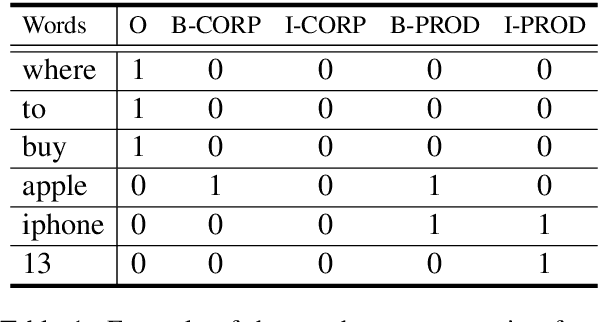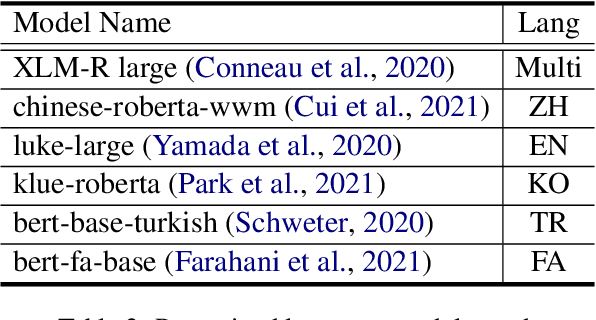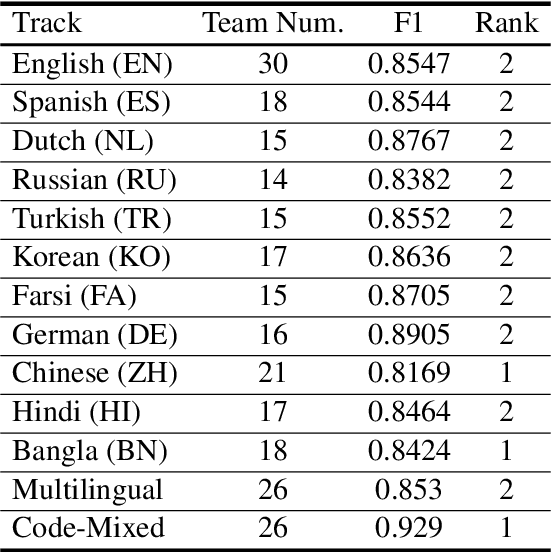Jiajun Qi
An Enhanced Res2Net with Local and Global Feature Fusion for Speaker Verification
May 22, 2023Abstract:Effective fusion of multi-scale features is crucial for improving speaker verification performance. While most existing methods aggregate multi-scale features in a layer-wise manner via simple operations, such as summation or concatenation. This paper proposes a novel architecture called Enhanced Res2Net (ERes2Net), which incorporates both local and global feature fusion techniques to improve the performance. The local feature fusion (LFF) fuses the features within one single residual block to extract the local signal. The global feature fusion (GFF) takes acoustic features of different scales as input to aggregate global signal. To facilitate effective feature fusion in both LFF and GFF, an attentional feature fusion module is employed in the ERes2Net architecture, replacing summation or concatenation operations. A range of experiments conducted on the VoxCeleb datasets demonstrate the superiority of the ERes2Net in speaker verification.
USTC-NELSLIP at SemEval-2023 Task 2: Statistical Construction and Dual Adaptation of Gazetteer for Multilingual Complex NER
May 04, 2023Abstract:This paper describes the system developed by the USTC-NELSLIP team for SemEval-2023 Task 2 Multilingual Complex Named Entity Recognition (MultiCoNER II). A method named Statistical Construction and Dual Adaptation of Gazetteer (SCDAG) is proposed for Multilingual Complex NER. The method first utilizes a statistics-based approach to construct a gazetteer. Secondly, the representations of gazetteer networks and language models are adapted by minimizing the KL divergence between them at both the sentence-level and entity-level. Finally, these two networks are then integrated for supervised named entity recognition (NER) training. The proposed method is applied to XLM-R with a gazetteer built from Wikidata, and shows great generalization ability across different tracks. Experimental results and detailed analysis verify the effectiveness of the proposed method. The official results show that our system ranked 1st on one track (Hindi) in this task.
USTC-NELSLIP at SemEval-2022 Task 11: Gazetteer-Adapted Integration Network for Multilingual Complex Named Entity Recognition
Mar 07, 2022



Abstract:This paper describes the system developed by the USTC-NELSLIP team for SemEval-2022 Task 11 Multilingual Complex Named Entity Recognition (MultiCoNER). We propose a gazetteer-adapted integration network (GAIN) to improve the performance of language models for recognizing complex named entities. The method first adapts the representations of gazetteer networks to those of language models by minimizing the KL divergence between them. After adaptation, these two networks are then integrated for backend supervised named entity recognition (NER) training. The proposed method is applied to several state-of-the-art Transformer-based NER models with a gazetteer built from Wikidata, and shows great generalization ability across them. The final predictions are derived from an ensemble of these trained models. Experimental results and detailed analysis verify the effectiveness of the proposed method. The official results show that our system ranked 1st on three tracks (Chinese, Code-mixed and Bangla) and 2nd on the other ten tracks in this task.
Bidirectional Multiscale Feature Aggregation for Speaker Verification
Apr 01, 2021



Abstract:In this paper, we propose a novel bidirectional multiscale feature aggregation (BMFA) network with attentional fusion modules for text-independent speaker verification. The feature maps from different stages of the backbone network are iteratively combined and refined in both a bottom-up and top-down manner. Furthermore, instead of simple concatenation or element-wise addition of feature maps from different stages, an attentional fusion module is designed to compute the fusion weights. Experiments are conducted on the NIST SRE16 and VoxCeleb1 datasets. The experimental results demonstrate the effectiveness of the bidirectional aggregation strategy and show that the proposed attentional fusion module can further improve the performance.
 Add to Chrome
Add to Chrome Add to Firefox
Add to Firefox Add to Edge
Add to Edge